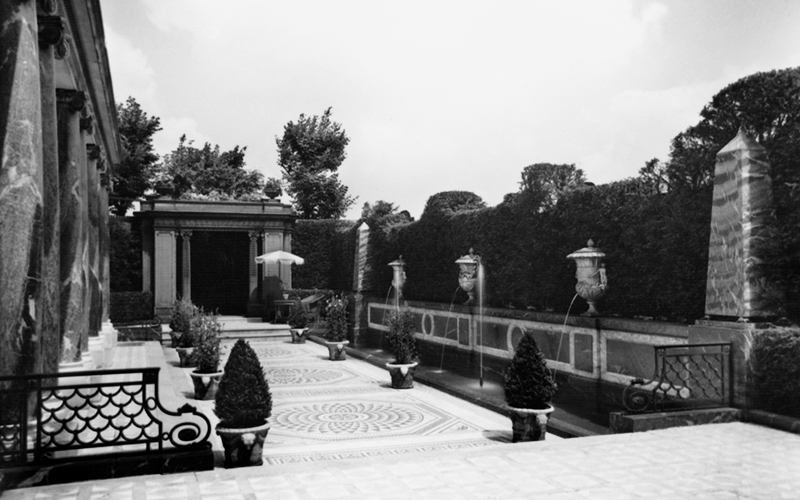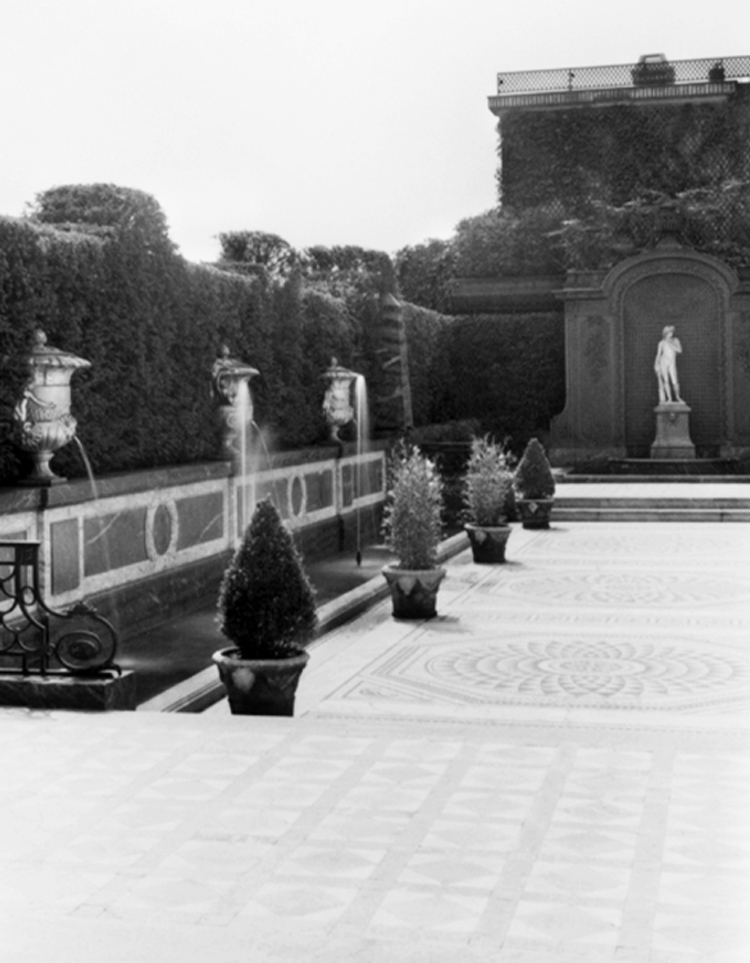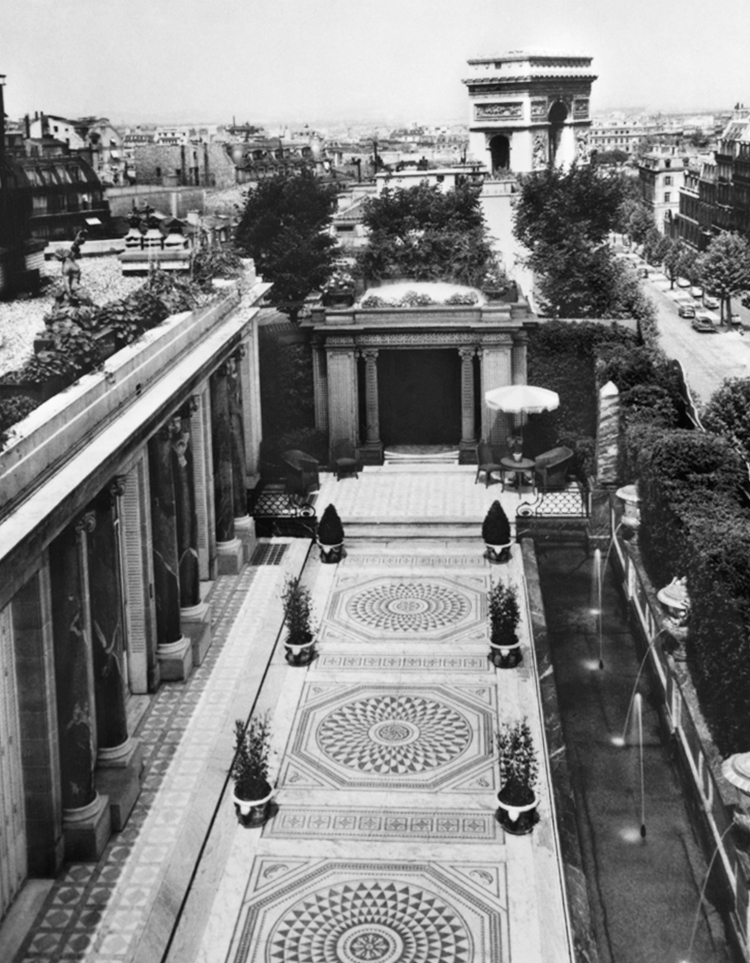Achille Duchêne: a garden terrace in Paris and a park in Normandy

Calouste Gulbenkian’s love of nature is well-documented in his letters and in the personal records he kept of his visits to gardens, as well as in his collection of clippings and specialist magazines. This interest was inevitably reflected in his purchases, including his large collection of 19th-century paintings of English and French landscapes in particular. Artists such as Daubigny, Millet and Corot peopled the walls of his house in Paris and can currently be seen in the permanent exhibition of theCalouste Gulbenkian Museum.
Although the hôtel particulier was located in the heart of the French capital, Calouste Gulbenkian sought to create a more natural environment by commissioning the construction of a garden terrace next to his private quarters, with views out over the Arc de Triomphe and Avenue d’Iéna. The terrace, which combined classical and Oriental elements, was designed by Achille Duchêne (1866–1947), one of the most sought-after French landscape architects in the early 20th century, who was also responsible for decorating the boiserie in the collector’s room.
The terrace, which was completed in 1933, featured black and white marble paving in the ‘Roman’ style, also designed by Duchêne. It was decorated with different kinds of tiles and the materials used were of the highest quality. The decoration was topped off by the Cupid Triumphant sculpture by German artist Konrad Heinrich Schweickle.


In 1937, Gulbenkian purchased a 34-hectare property near Deauville in Normandy, where he decided to create a garden. Achille Duchêne was again invited to design ‘Les Enclos’, as the garden became known. The collector would retreat into the garden to enjoy the shade of the tall trees and immerse himself in nature. While he was living in Portugal, he remained in close contact with those responsible for maintaining the property, suggesting plants to grow and asking them to send fruit from his orchard.
Achille Duchêne left his mark on a number of locations in France, as well as in other countries such as England, Germany, the Netherlands and Argentina. After learning the trade from his father, Henri Duchêne, he designed gardens for several important figures and published his futuristic vision for gardens in the book Les Jardins de l’avenir. Hier. Aujourd’hui. Demain in 1935.
A Collection of Stories
On a weekly basis, we shared a story around Calouste Gulbenkian’s collection. This section was created in 2020, which is why the articles refer to the Calouste Gulbenkian Museum collection as the Founder’s Collection.
Other stories